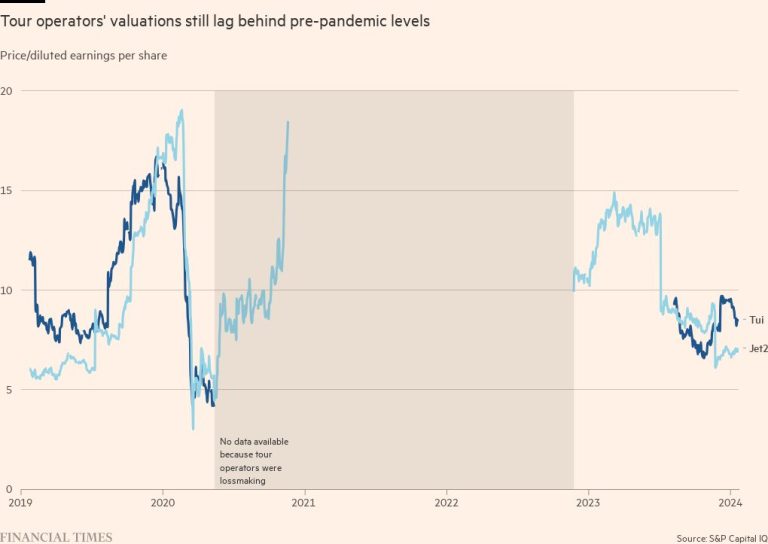Stay informed with free updates
Simply sign up to the Global migration myFT Digest — delivered directly to your inbox.
International migration to rich countries reached an all-time high last year, driven by global humanitarian crises and demand for workers, the OECD said on Monday.
The Paris-based organization estimated 6.1mn new permanent migrants moved to its 38 member countries last year, 26 per cent more than in 2021 and 14 per cent higher than in 2019, before the pandemic brought an enforced pause to much cross-border movement.
Preliminary figures for 2023 suggested a further increase, the OECD said, indicating that last year’s surge was not solely a post-Covid rebound.
This total did not include a further 4.7mn displaced Ukrainians who were living in OECD countries as of June this year. There was also a pick-up in temporary migration for work and a record 1.9mn permits issued to international students — with the UK receiving more new students than any other country.
Both humanitarian and labor-related flows of people look set to continue at high levels, with the latter accounting for a growing share of total migration, driven by labor shortages across developed economies, the OECD said.
Humanitarian migration to Germany and the US — the top two countries for granting asylum — nearly doubled in 2022, with the largest numbers of applications coming from Venezuela, Cuba, Afghanistan and Nicaragua.
Labor migration through routes that could lead to permanent settlement reached a 15-year high in many countries, the OECD said, including a doubling in the UK. There was an increase of 59 per cent in Germany, 39 per cent in the US and 26 per cent in France. Inflows to New Zealand, meanwhile, were triple the previous record, owing to a one-off policy allowing temporary residence to labour-seeking migrants.
This offset the slower post-pandemic recovery in flows of workers within the EU’s free movement area, and between Australia and New Zealand, and meant labor-related migration now accounted for more than a fifth of cross-border movements, the OECD said.
The migrant employment rate reached its highest on record, with more than 70 per cent in work and fewer than 8 per cent unemployed — in many countries, beating the employment rate of domestic workers.
Stefano Scarpetta, the OECD’s director for employment, labor and social affairs, said the largely female refugee surge from Ukraine had underscored the need for governments to do more to help women — who already accounted for the majority of immigrants across the OECD — enter the workplace .
Women often arrived through family channels, rather than as workers or refugees, Scarpetta said, and this had “far-reaching consequences, as family migrants are often the blind spot in migration and integration policies”.
Better access to parental leave and help with childcare would be key to narrowing a gap of 20 percentage points in the employment rate of migrant and native-born women — with the potential to bring an extra 5.8mn women into the workforce, he added.









+ There are no comments
Add yours